Statistics Summative Assessment 1: GHG Emission, ANOVA & Correlation
VerifiedAdded on 2023/06/15
|8
|856
|189
Homework Assignment
AI Summary
This assignment solution provides a comprehensive analysis of statistical data, focusing on greenhouse gas (GHG) emissions and their relationship with various factors such as region, population, GDP, and temperature. Descriptive statistics are used to summarize the data, revealing insights into the average GHG emissions, population sizes, GDP, and temperature variations across different regions. A one-way ANOVA test is conducted to determine if there is a significant difference in per capita annual greenhouse gas emissions between different UN regions, concluding that no significant difference exists. Furthermore, a correlation table explores the relationships between GHG emissions and other variables, indicating a strong positive correlation with population and GDP, and a weak negative correlation with temperature. The analysis highlights the multivariate associations, emphasizing the significant impact of population and GDP on GHG emissions. Desklib offers a variety of study resources, including past papers and solved assignments, to support students in their academic endeavors.
1 out of 8
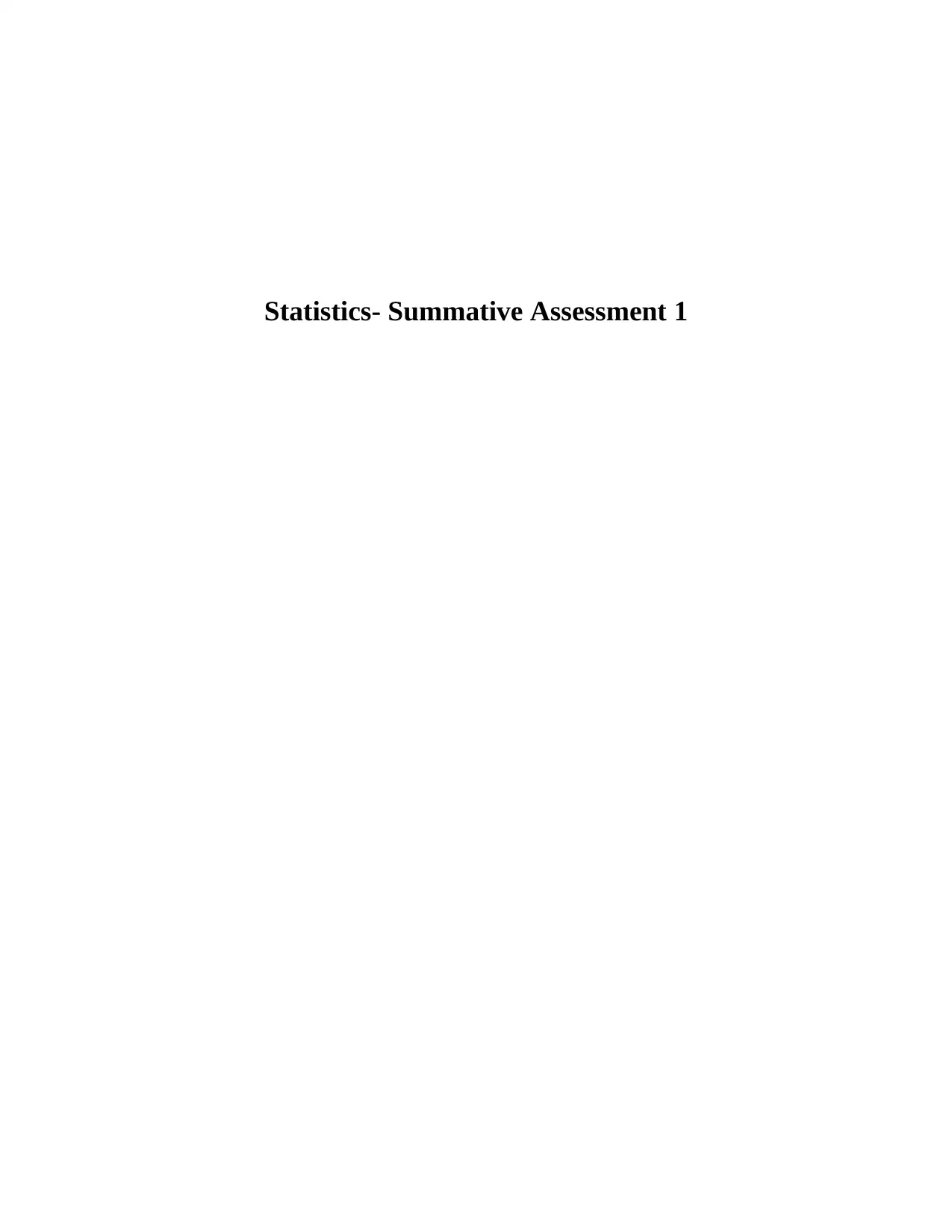

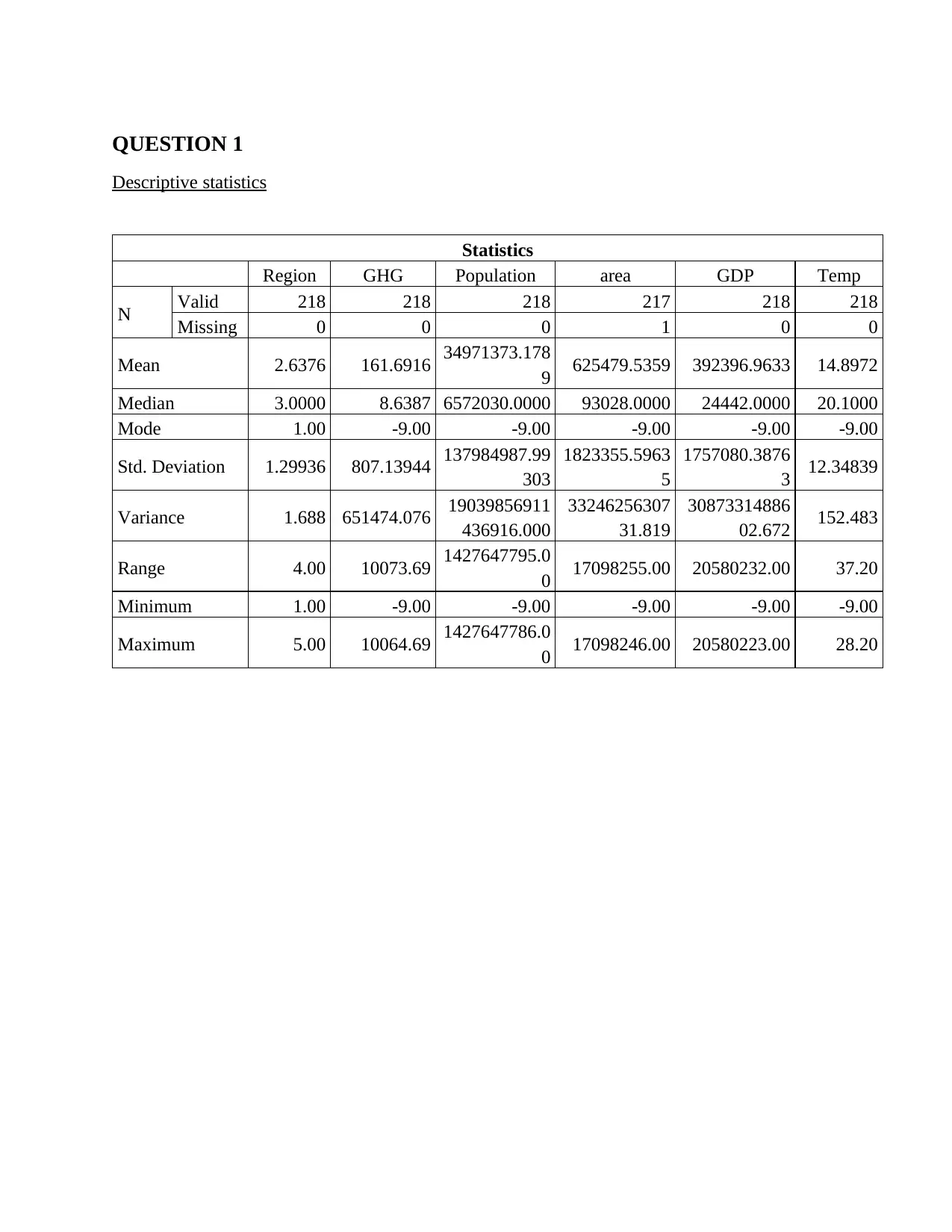

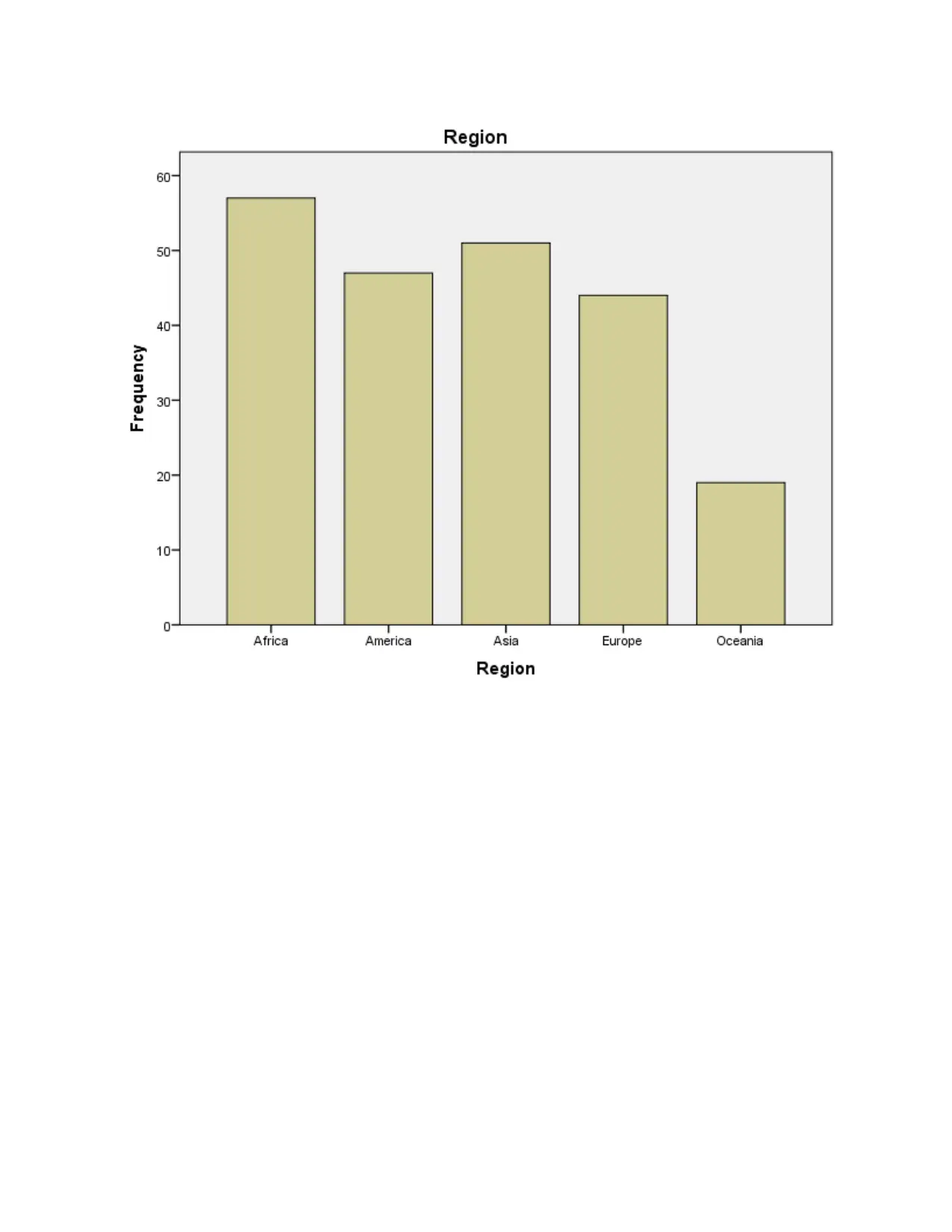
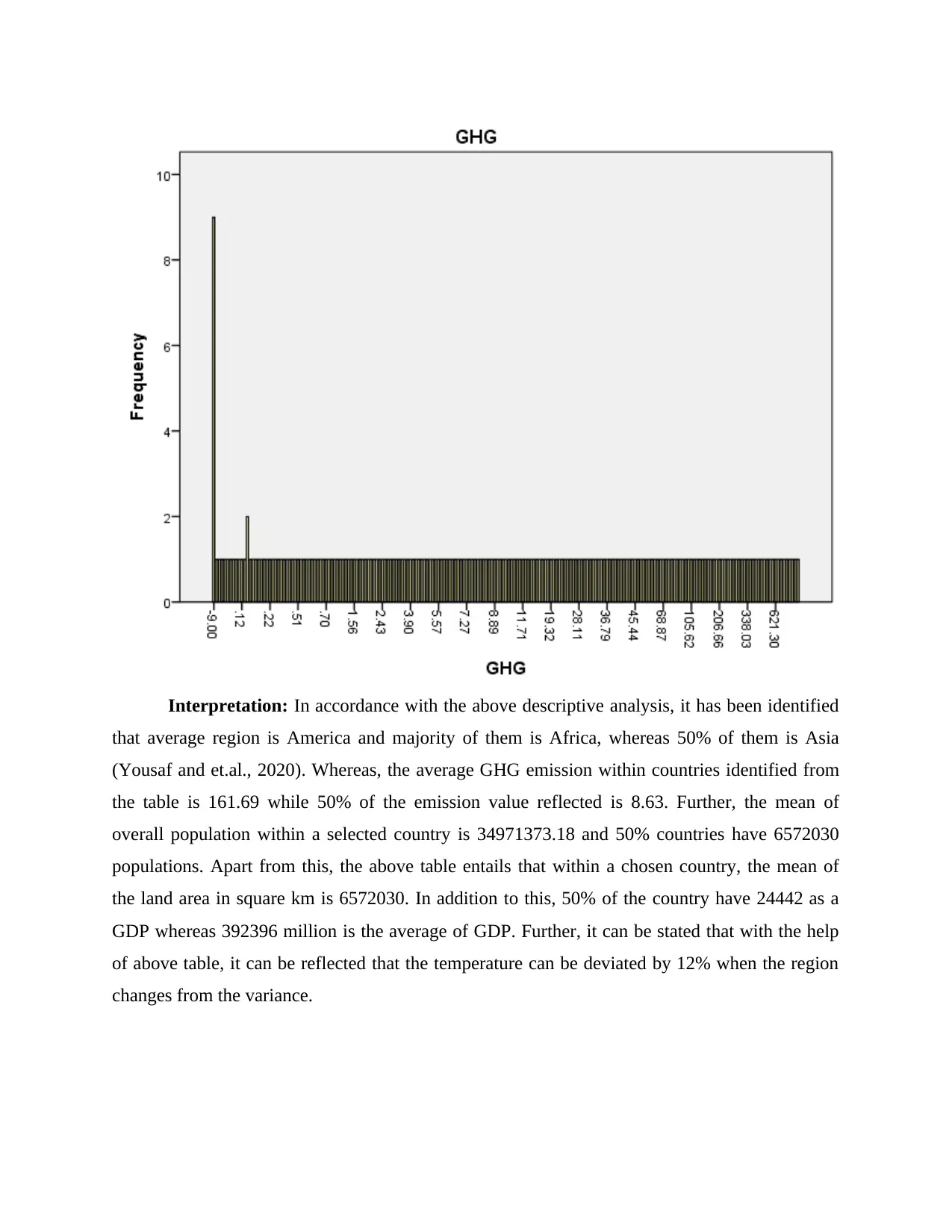
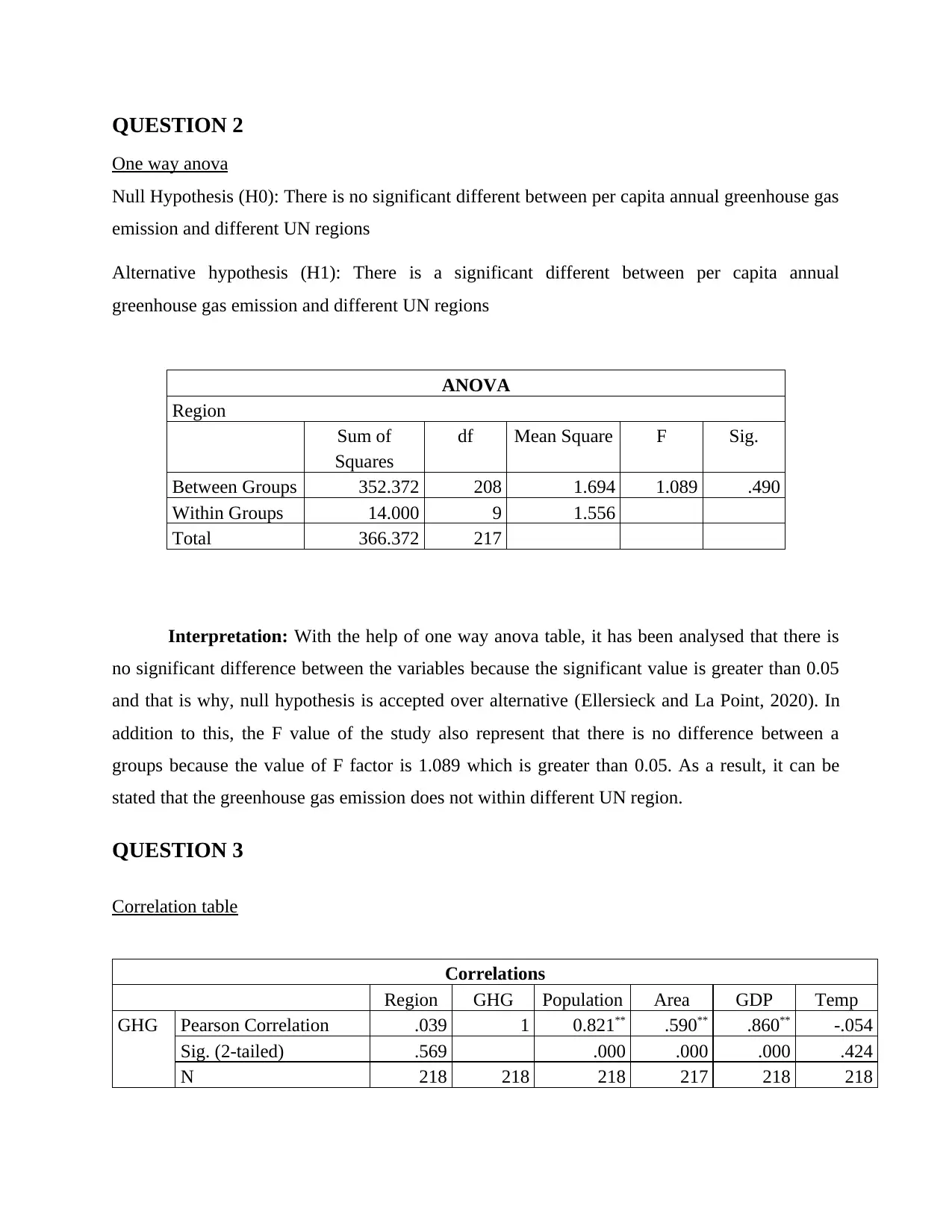
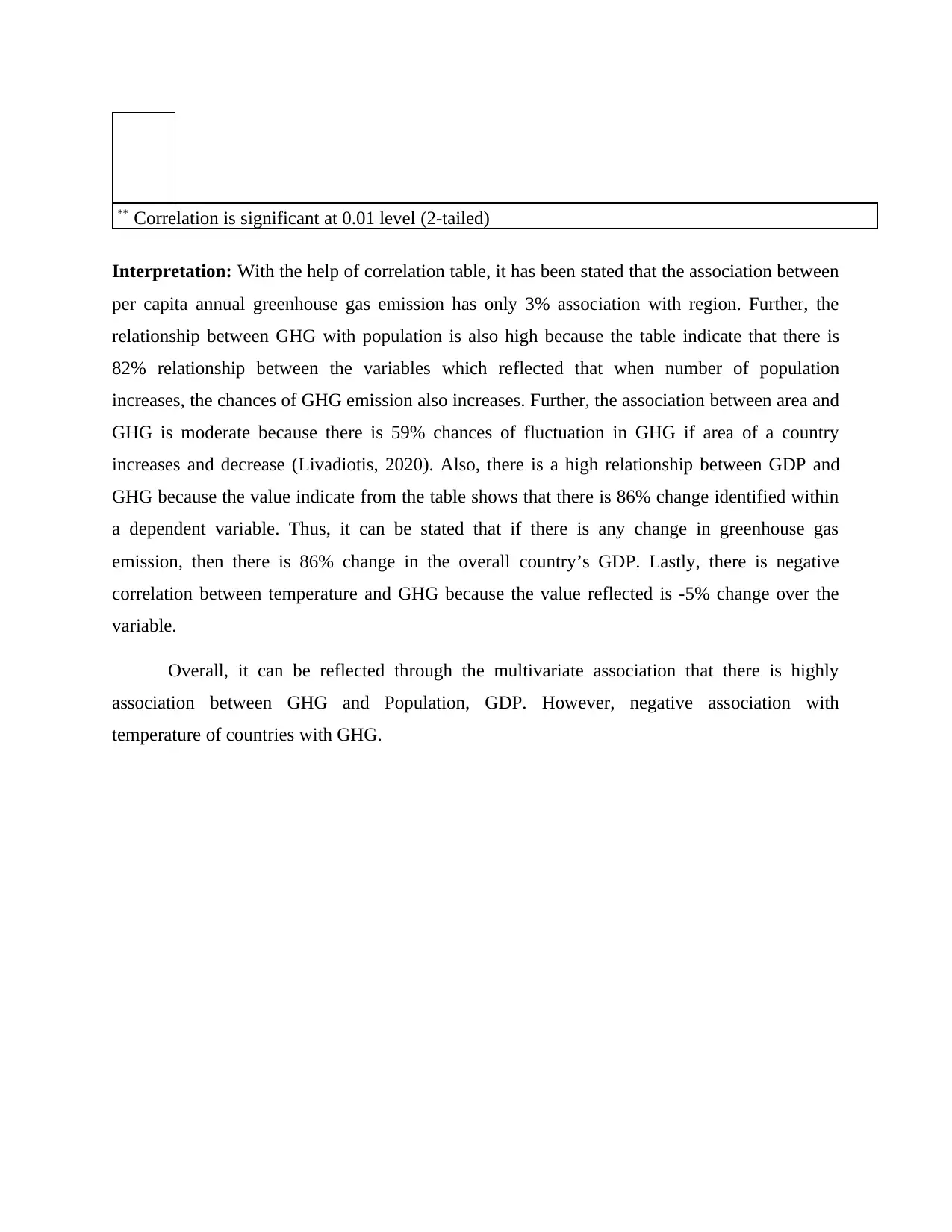
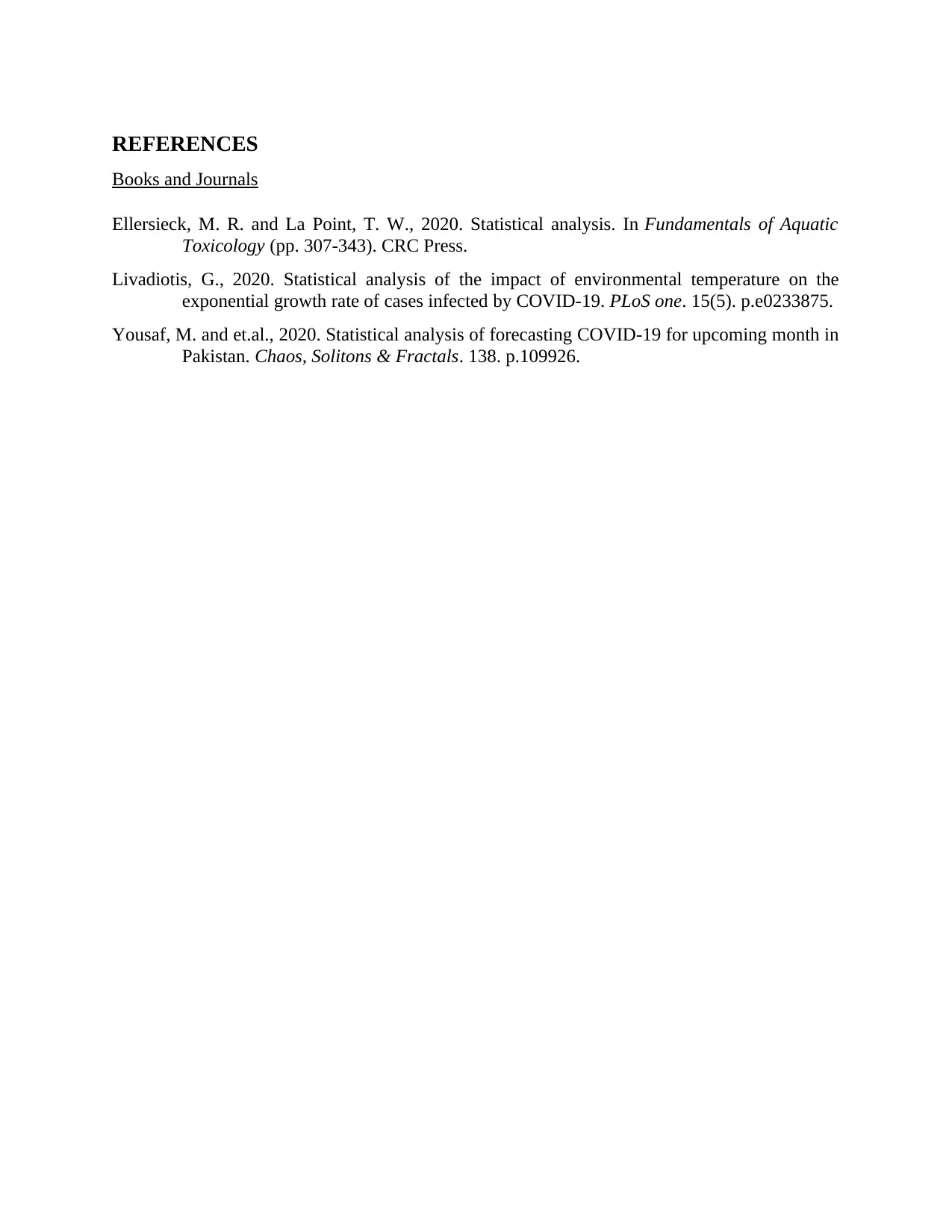
![[object Object]](/_next/static/media/star-bottom.7253800d.svg)